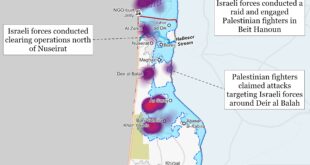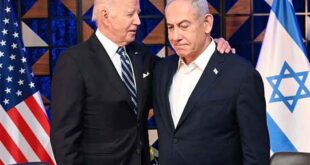Forty days in and the protests that have rocked Iran since the death of 22-year-old Mahsa Amini at the hands of the regime’s notorious morality police show no sign of abating, yet experts remain divided over whether the movement can achieve real change.
Multiple waves of anti-government protest have rocked Iran over the past two decades, from the 1999 Salam newspaper disorders, in which seven students died, to the 2009 Green Movement, which ended after 72 protesters were killed by security forces.
Later came the 2019 fuel and gas crisis, which brought 200,000 people to the streets and left at least 143 dead, according to human rights monitor Amnesty International.
However, the current demonstrations, which followed Amini’s death in police custody over an alleged infringement of the country’s strict hijab rules, represent something of a sea change, with the usual heavy-handed regime response failing to blunt their momentum.
“In 2009, the majority of the protesters were from the middle classes. In 2022, protesters are from the working classes and lower sections of the middle classes,” Yassamine Mather, editor of the UK academic journal Critique and expert in Iranian politics, told Arab News.
“This means we are seeing in total larger numbers involved in the protests and the demonstrators are younger and braver than 2009. They don’t seem deterred by attacks from the security forces.
“This can only be compared with protests in 1979. All this coincides with unprecedented workers’ strikes and general unrest. It looks like repression, curtailing the Internet, arrests and killing of protesters has failed.”
Indeed, at the time of writing, what is being termed the “Mahsa Amini Revolution” by anti-government groups has become the largest, deepest and bloodiest movement the regime has faced since taking power in the revolution of 1979.
Protests have taken place in more than 80 cities across the country, involving both men and women, and people of all ages and ethnic backgrounds. The unrest has left more than 200 people dead, including school children.
The initial focus of the movement was on Iran’s strict clothing requirements for women, before swelling to include calls for greater civic freedoms, finally leading to a concerted demand for the outright removal of the clerical regime.
Sanam Vakil, deputy director of Chatham House and senior research fellow for the institute’s Middle East and North Africa program, told Arab News the latest protests are the “most significant” the regime has faced.
“Despite government repression, the persistence of the protests and myriad groups coming out to express grievances — women, students, labor entities, ethnic groups, youth groups — reveals the breadth of dissatisfaction within Iran,” Vakil said.
“We have also yet to see these groups coalesce simultaneously, this decentralized approach is also a distinguishing quality.”
Both Vakil and Mather see the decentralized approach as a “blessing and a curse,” and have concerns that the absence of a central authority figure will prove even more problematic as the unrest continues.
“Lack of coordination and organization can become a serious problem as protests escalate and repression increases,” said Mather. “The absence of an alternative (to the government) is an issue (and) I don’t believe in the idea that progressive leadership spontaneously emerges from within the ranks of demonstrators. This hasn’t happened so far.”
The benefit of having a figurehead at the helm of a movement is that they can provide a clear articulation of its aims on behalf of the wider population. By contrast, the current protests appear less like a revolution and more like a public outpouring of anger, which will ultimately fizzle out.
Dania Koleilat Khatib, co-founder of the Research Center for Cooperation and Peace Building, said that figureheads can strengthen social movements in several important ways.
“They can take you beyond the anger,” Khatib told Arab News. However, there is a tendency to “forget these things take time,” adding that successful anti-government movements usually take “at least two years.”
Agreeing that identifying a leader “takes time,” Vakil said the process has been further disrupted by how “effective” the Iranian regime has been in jailing, exiling and silencing any potential figureheads.
In some senses, the lack of a clearly identified leader can be a strength. In Mather’s view, the decentralized approach makes it much harder for protests to be curtailed by “reformist” leaders from within the system who may simply want to replace serving officials and ease some unpopular social rules, but ultimately intend to leave most of the regime and its policies untouched.
Nadim Shehadi, an associate fellow at Chatham House, and former head of its Middle East and North Africa program, believes adopting a figurehead would be detrimental for the movement.
“I emphatically think a figurehead would be a huge mistake that strengthens the regime,” Shehadi told Arab News. “It would be very easy to shoot anyone down, and this makes the regime stronger.
“I said the same thing in 2011 during several meetings with the international community as they were busy trying to form a credible Syrian opposition. It puts the onus on the opposition to prove viability, strength, legitimacy and leadership.
“Diffuse, generalized opposition that delegitimizes its rule is what will weaken the Iranian regime. It’s about keeping the focus on their inability to govern. Put an individual up against them and they lose, and the regime will be laughing.”
Arash Azizi, a historian at New York University and author of “The shadow commander: Soleimani, the US and Iran’s global ambitions,” agrees there is no need for a figurehead, but feels “organization and leadership” are necessary to contend with the “supercentralized” nature of a regime backed by strong security forces and about 15 percent of the population.
“The movement needs organization with touching points linking each other,” Azizi told Arab News. “This can emerge within Iran, as hard as it is, but it can also emerge from outside if the Iranian leadership overseas can cut their bickering and unite.
“These people have great access internally to Iran. A united opposition could be on TV every night, but they haven’t grasped this opportunity yet. I hope after six weeks they can see this as the issue.”
Shehadi of Chatham House said the lifespan of the protests was somewhat “intangible,” and as much in the hands of the regime as the protesters, noting that Egypt’s Hosni Mubarak lasted through 11 days of protests before stepping down, Libya’s Muammar Qaddafi was killed, and Bashar Assad responded by “burning the country” and to this day remains in post.
Khatib of the Research Center for Cooperation and Peace Building is more circumspect about Assad’s approach, arguing that he is “living on borrowed time,” but said the Iranian protesters’ capacity to tolerate increasing levels of brutality will be important.
Shehadi agrees, saying that protesters will have to be able to “bear many, many deaths,” and that the regime’s only limit for violence stemmed from the international community’s willingness to allow it to happen. “And we’ve seen with Syria that the international community can be very tolerant of this,” he said.
“It really does all depend on the protesters’ stamina,” said Khatib. “I cannot see them holding out because this regime has shown itself very willing to be incredibly brutal and if it can unite its different factions, I think the protests will fold, but then the regime will be living on borrowed time.”
Despite differences on how the protesters might achieve change, all the analysts Arab News spoke to agreed there appear to be cracks forming in the regime, with Khatib highlighting divergences between the Islamic Revolutionary Guard Corps and the Supreme National Security Council.
“I think we are likely to see a struggle between these centers of power, particularly with the pending succession of (Ayatollah) Khamenei, who has been pushing his son Mojtaba as his replacement, even though he is deeply disliked,” said Khatib.
For Azizi, although it is mere speculation that Khamenei is behind this push, there are indications that Mojtaba had been building support for himself within the IRGC. “But once Khamenei is gone, maybe the IRGC won’t need his son,” he added.
Azizi, Mather and Vakil also agree there are splits within the establishment on how to handle the protests, with hard-liners, seeing compromise as a weakness, determined to double down on the heavy-handed approach, even if it means destroying the country.
“Pragmatic reformists like (Ali) Larijani see compromise on social issues as a pathway to restore lost government legitimacy,” Vakil added. “But without consensus on how to handle these issues, political stagnation will follow, and the protests will prevail.”
 Eurasia Press & News
Eurasia Press & News




